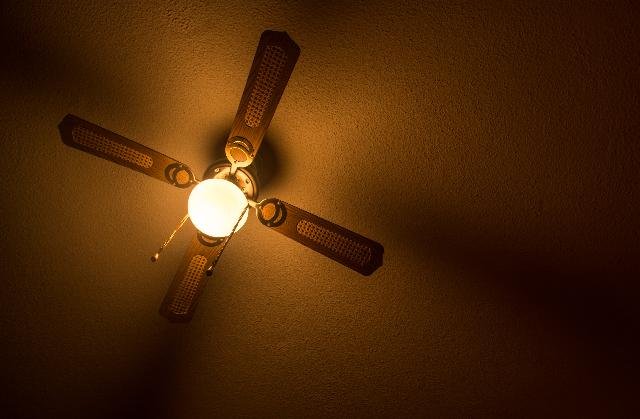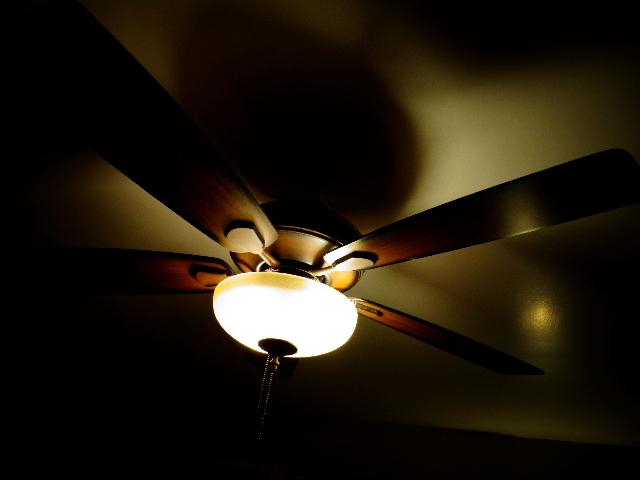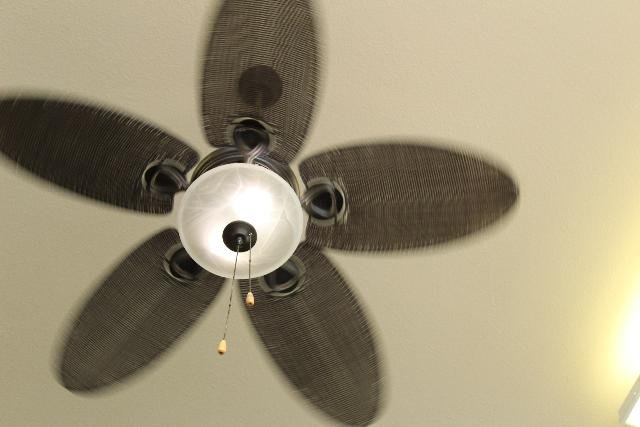Last Updated on July 25, 2023 By Emma W. Thomas
Ceiling fans typically last for 10 to 15 years with proper maintenance and usage. Factors, like build quality, frequency of use, and environmental conditions, can affect their lifespan. Regular cleaning, lubrication, and motor maintenance can extend their longevity.
How Long Do Ceilings Fans Last?
Ceiling fans are an essential part of any home and often run for an impressive number of years. Understanding the lifespan of ceiling fans is an important factor to consider when deciding to purchase one.
1. Lifespan of a Ceiling Fan
On average, a good-quality ceiling fan lasts anywhere between 10 and 15 years. However, the actual lifespan depends on various factors such as its quality, usage, and maintenance.
2. Factors That Affect the Lifespan of Ceiling Fans
Different elements can influence the durability and longevity of ceiling fans as follows:
- Brand and Quality: Fans of high-quality and reputable brands tend to last longer due to their superior components and craftsmanship.
- Usage: The more a fan is used, the faster its parts will wear out. Constant use can lead to a shorter lifespan.
- Maintenance: Regular cleaning and maintenance can extend the life of a ceiling fan dramatically. Dust and dirt can cause the motor to work harder, shortening its lifespan.
- Installation: Proper installation is key. Incorrectly installed ceiling fans may not function as effectively, leading to a decrease in lifespan.
3. Extending the Lifespan of a Ceiling Fan
It’s possible to prolong the lifespan of your ceiling fan through:
- Proper installation: Make sure that the fan is installed correctly to avoid any unnecessary strains on the unit.
- Regular cleaning: Dust and debris can cause additional stress on the fan’s motor. Regular cleaning will keep it running more smoothly.
- Professional maintenance: Hiring a professional to inspect and service your fan periodically will ensure it is in top condition.
How do you know that your ceiling fan needs a replacement?

Various signs can tell when your device requires a replacement, including;
Wobbling fan blades
A ceiling fan’s blades need to rotate in a circle for proper air movement. If you notice the edges wobbling or the fan moving, it could indicate that the device is faulty. Wobbling blades could signal the danger of ceiling fans falling, resulting in a lot of damage. You need to call an expert to check for any internal issues and fix them before it is too late.
If the problem is extensive, it could be a sign that the appliance requires a replacement.
Squeaking sounds or buzzing fan
While a running ceiling fan may produce some noise, it should not be too loud or unpleasant. Squeaking or buzzing noises could be a sign that the device is faulty and needs some attention. It could mean that your ceiling fan has improper wiring and poor installation. Call in an expert to disassemble and check if there is a wiring problem and fix it. The expert may also advise you on whether to replace your device or not.
Reducing speeds
An optimally performing ceiling fan usually has three different speeds, i.e., slow, medium, and quick. If these speeds diminish, it could indicate that the motor is failing. It could also be a sign that some wires are loose, or it’s time to replace the fan.
The ceiling fan is not turning on or off.
If your ceiling fan has an electrical issue, it won’t turn on or off, and it could be a sign of a damaged motor. It could also mean that there are more severe internal wiring problems. Call an experienced technician to check if your appliance needs a repair or a replacement.
The ceiling fan breaks down frequently.
If the issues mentioned above keep recurring even after repair, it indicates that it needs to be replaced. While it is good to do repair and maintenance for your equipment to last longer, you will eventually have to replace it. Be sure to look out for the signs that tell you it is time to purchase a new one.
What are the different types of ceiling fans available?
Different types of fans are available in the market, and you can choose one according to your needs. The table below shows these devices and their main features;
Type of ceiling fan | Distinctive feature |
Standard ceiling fan | It has 4 to 5 blades. There are different styles to match various décor. Many operating mechanisms and a built-in light fixture |
Energy Star ceiling fans | It is an energy-efficient device with aerodynamic blades and efficient motors. |
Low-profile ceiling fans | For use in homes less than 8-feet tall. It does not need a download, but it is fixed to the mounting bracket. |
Dual motor ceiling fan | It has two motors, each with its speed. Ideal for public settings |
Remote-controlled | Uses a remote control and is ideal for people with mobility problems and homes with high ceilings. |
Damp ceiling fans | Ideal for humid areas or those with frequent rains |
Agricultural, industrial, & commercial fans | They are ideal for large areas as they can deliver a lot of air. |

Standard ceiling fans
This type of device is common in the majority of homes. They are versatile and come in different styles that are compatible with any décor. Some of the standard fan finishes include Auburn, brushed nickel, black, white, natural, and pewter.
Standard ceiling fans have four or five blades and several operating methods, as well as a built-in light fixture. But, there are also some of these appliances with no light. The ceiling fans with the light fixture come with a shade that has several finishes to choose from and which can be customized according to your home décor.
You can also fit different accessories into your traditional ceiling fan, including remote control, a pull chain, customizable blades, and light kits. Standard ceiling fans utilize a down rod, which helps in mounting them to a ceiling. A download is a metal tube that links the mounting brackets to the motor housing.
Dual motor ceiling fans
As the name would suggest, dual-motor ceiling fans come with two motors. The appliances have a central motor housing joined to two horizontal rods, and each has its adjustable fan head. Dual motor fans are more elegant than the traditional one-motor ceiling fans as you can set each at its speed.
These ceiling fans are suitable for public settings as they can circulate air in specific directions and serve a broader region.
Remote-controlled ceiling fans
Remote-controlled ceiling fans could be any type, including standard, dual-motor, damp, or any other kind, with remote controls. These fans are ideal for people with mobility problems or those who are too short to reach the pull cords on their fans. The fan is also suitable for high-ceiling homes and uses in auditoriums, large event rooms, restaurants, and other business properties.
Although the features of remote-control ceiling fans may be different, all the models will allow for speed and direction of blade adjustment. Some of them will also have a height range of between 40 and 50 feet.
Energy star ceiling fans
This type of ceiling fan comes in both low-profile and standard models like other fans. The fans are both energy-efficient and environment-friendly, and also inexpensive to run. According to the EPA (Environmental Protection Agency), a product must use 20 to 30% less energy than federal standards to be given an energy star rating.
These fans have aerodynamic blades and effective motors that make them consume less energy. An ordinary energy-saving fan is 20% more efficient than other types, but the efficiency increases up to 50% if the device is integrated with lights.
Wet & Damp ceiling fans
Wet ceiling fans are excellent outdoor appliances and ideal for those living in areas that receive frequent rains. They are also great for humid locations as their motors are resistant to damage caused by moisture and humidity. The fans’ blades are all-weather, thus resistant to warping. There are exotic styles to choose from, both contemporary and traditional.
Damp ceiling fans are great for outdoor areas and rooms without direct precipitation but may experience some amount of dampness. Examples of these areas are covered patios, covered porches, and sunrooms.

What factors should you consider when purchasing a ceiling fan?
Several factors are applicable when choosing a ceiling fan, and they also affect its lifespan. These factors include;
Ceiling fan’s size
Your ceiling fan’s size needs to match the size of the room you want to use it in since if it is too big or too small, there will be no proper air supply. Be sure to leave a clearance of between 18 inches to 24 inches on all sides when determining the size.
It would help if you also considered the hanging height of the fan. The hanging height needs to be 7 feet above the floor, but you can leave 8 to 9 feet as this will allow for maximum air circulation. If your roof is higher, fans with downloads come in handy to attain an accurate height. Be sure to leave at least 12 inches between the top and the blades.
For low ceilings such as 8 feet and below, you can use flush mount fans as they create a low profile and don’t have downloads.
How it operates
Before purchasing a ceiling fan, it is necessary to check how it works, for example, if it uses remote controls, its CFM and airflow, and also its motors. It would help if you considered whether you want an appliance with a pull chain to help adjust its speed and turn on and off. You can also choose one that uses remote controls, which allows you to operate it from different locations in the room, or one that uses a wall switch.
The amount of airflow, measured in CFM (cubic feet per minute) determines the device’s efficiency. This measurement is taken when the fan is running at high speed, and the number is divided by watts consumed. A high CFM indicates a more efficient fan and increased airflow.
An effective ceiling fan should have a minimum of 75cfm/w according to energy star requirements. All ceiling fan manufacturers need to provide the CFM measurements on all their catalogs, boxes, and brochures as per EPA requirements.
Conclusion
A Ceiling fan should last for about 10-years, but some can have a lifespan of between 15 – 20 years. However, for optimum performance and extended lifespan, one needs to take proper care and regular maintenance. You also need to purchase a good-quality device that has the best features.
References:
https://www.valuelights.co.uk/how-long-do-ceiling-fans-usually-last
https://www.replacementremotes.com/blog/how-long-does-a-ceiling-fan-last/
Emma is a graduate of Domestic Science or Family and Consumer Sciences (Home Economics) from the University of Wisconsin. She has 7 years of experience Working with the strategic section of BestBuy and now writing full-time for Homeeon.
From Managing the Home, Interiors, Cleaning, and Exteriors to Gardening and everything about Making A Home Liveable – is her passion and this Homeeon is the result of this.
Emma loves decorating her home with the best stuff found online. She cares about quality over anything and writes reviews about them here in Homeeon. Get in touch with her over Pinterest.
Keep reading her blogs.
